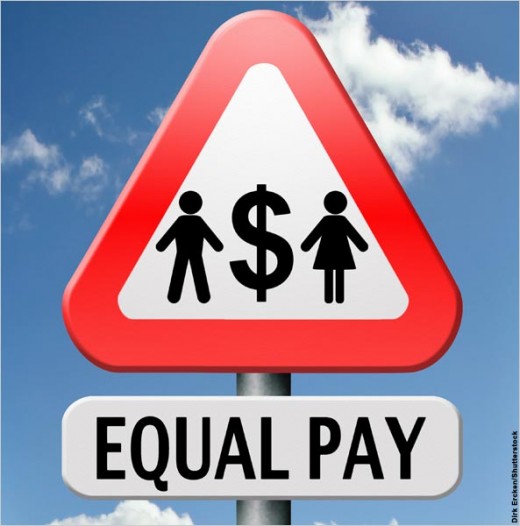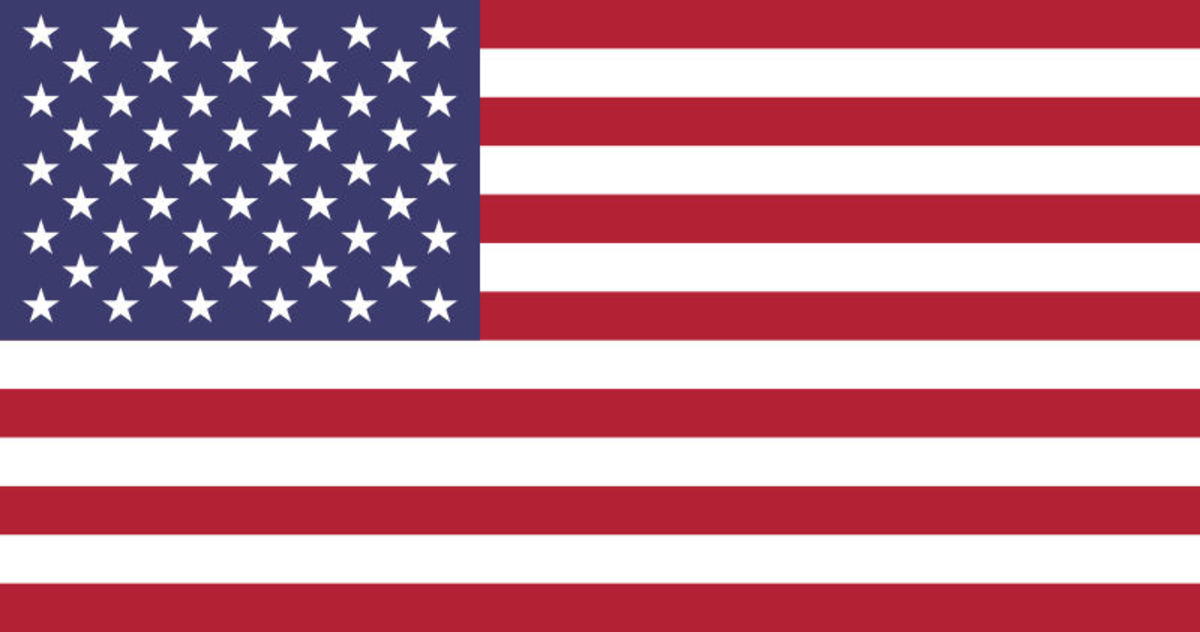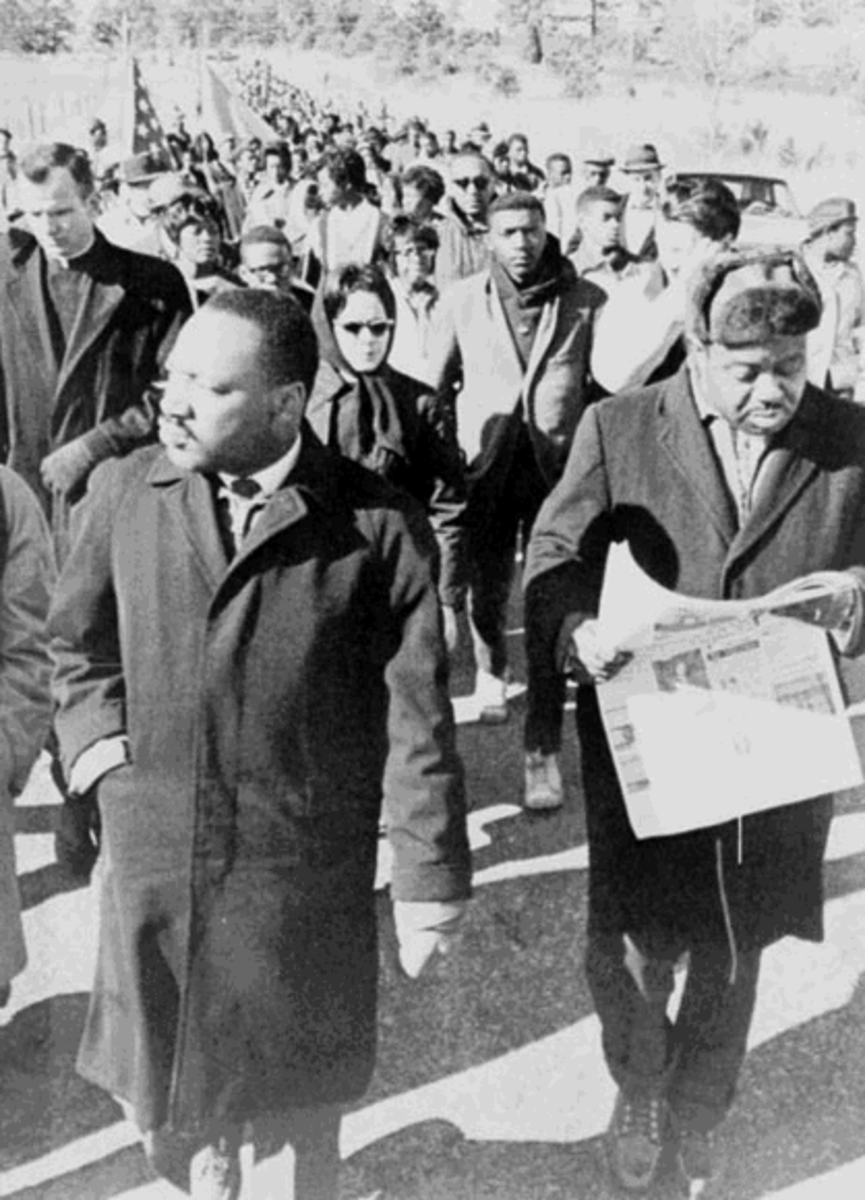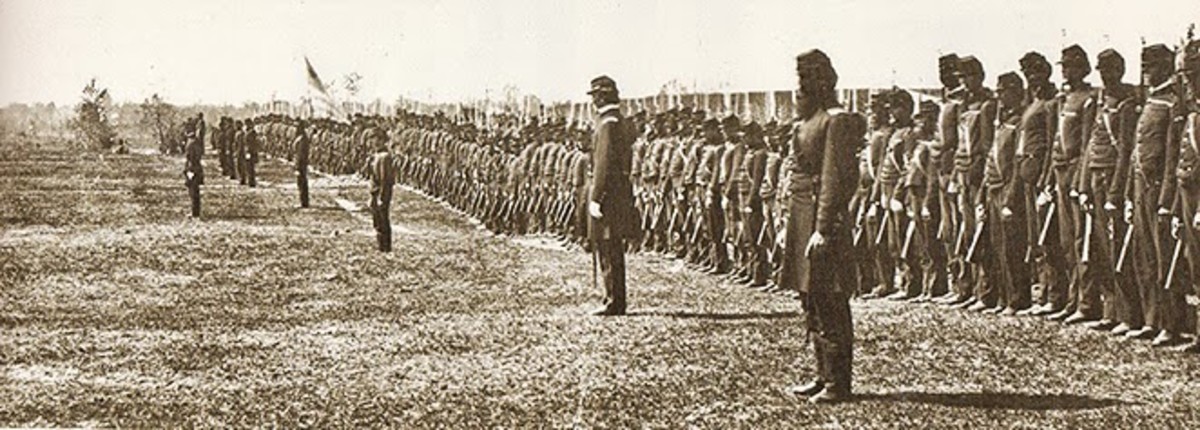- HubPages»
- Education and Science»
- History & Archaeology»
- History of the Americas»
- American History
Civil Liberties Information & Soul Food: Catfish Po' Boy Recipe
Liberty

Civil Liberties
Since the ending of the Civil War and the freeing of the slaves there have been many amendments and acts constructed to try to equalize the American public. Laws have been created to ensure that people of every color, age and gender are on an equal playing field when it comes to voting, working and other such opportunities. The Emancipation Proclamation, though not an official act or amendment, paved the way for the passing of the Thirteenth Amendment, the Fourteenth Amendment and the Fifteenth Amendment. With the passing of these amendments slavery was abolished, due process and equal protection rights were given to all citizens, and the right to vote became a right for all citizens, though this right was not given to women as women were not full citizens but mere extensions of their husbands during this period. This was remedied with the Nineteenth Amendment which did give women the right to vote in 1920. All of these civil liberties acts were passed before the year of 1930, but several more acts were passed after the year 1930 had come and gone.
After 1930 the focus was more on the country as a whole. The Equal Pay Act was passed in 1963 and this made it so that all Americans could receive the same pay, regardless of gender. In 1964 the Civil Rights Act was passed which prevented discrimination in a number of different situations including, but not limited to; voting, public accommodations, public facilities, public education, federally assisted programs and employment. Though there were many acts passed during the 1960s and 70's in order to protect African Americans and women, other acts were created in later years to protect other kinds of citizens who may be discriminated against. Some of these citizens include pregnant women, people with disabilities and families. In 1978 the Pregnancy Discrimination Act was enacted, which made it illegal to discriminate on a women seeking employment or currently employed if she were pregnant. In the year 1990 the Americans with Disabilities Act was passed. This act stated that anyone with learning disabilities was not to be discriminated against in any way, shape or form, especially when it came to employment and access to public accommodations. In 1993 Congress passed an act called the Family and Medical Leave Act. This act gave workers the right to take time off of work in order to care for a newborn, a recently adopted child or a sick relative. In order to get a good grip on all the adjustments that these amendments and acts create, one actually has to examine these acts and the historical events which caused them to be enacted.
The Emancipation Proclamation and the Thirteenth Amendment were both very important factors in equalizing rights between the races. "On September 22, 1862, President Lincoln issued the Preliminary Emancipation. On January 1, 1863, approximately one hundred days later he issued the final Emancipation Proclamation" (Franklin, 1963, p. 260). The Emancipation Proclamation was not an official act or amendment, it was just a presidential proclamation that stated; "And by virtue of the power, and for the purpose aforesaid, I do order and declare that all persons held as slaves within said designated States, and parts of States, are, and henceforward shall be free; and that the Executive government of the United States, including the military and naval authorities thereof, will recognize and maintain the freedom of said persons" (Lincoln, 1863). President Lincoln gave a speech that said that by his power slaves would no longer be slaves but nothing was official; "the Emancipation Proclamation set in motion the potential freedom for slaves" (Bowels, 2011). While the Emancipation Proclamation did not grant the slaves freedom it set things in motion so that the slaves could be free. The thirteenth amendment was the first amendment that was made to 'The Constitution' that was not part of the original Bill of Rights. "The Thirteenth Amendment, ratified by 27 states by December 1865, represents the beginning of a new constitutional order in the United States" (Fletcher, 2007). The Thirteenth Amendment is what officially ended slavery in the United States, however, racial issues remained a huge deal in the South and parts of the North. Just because slaves had been freed did not mean that they had any official rights. The Fourteenth and The Fifteenth Amendment are two amendments that started really giving African Americans rights in the United States.
The Fourteenth Amendment and the Fifteenth Amendment were passed within three years of each other and gave all citizens the right to due process, equal protections rights and voting rights. "Before the Fourteenth Amendment, there was only a citizen of a State and a citizen of the United States" (Goodman, 2010). After the Fourteenth Amendment every person born in the United States was considered a citizen of the United States. " Enacted in 1868, it granted citizenship rights so that all persons born in the United States (including ex-slaves) became citizens of the state in which they resided. Surprisingly, this was the first time that the United States gave a formal definition of what it meant to be a citizen" (Bowels, 2011). Section 1 of the Fourteenth Amendment specifically states; "all persons born or naturalized in the United States, and subject to the jurisdiction thereof, are citizens of the United States and of the State wherein they reside. No State shall make or enforce any law which shall abridge the privileges or immunities of citizens of the United States; nor shall any State deprive any person of life, liberty, or property, without due process of law; nor deny to any person within its jurisdiction the equal protection of the laws" (Congress, 1866). This basically meant that no matter what color a person was, or what gender, as long as they were born in the United States, or were naturalized, they were citizens and had the same rights as every other citizen. This amendment did not stop racial discrimination, and in fact, "some blacks even acknowledged that they were not the social equals of the most educated and 'enlightened' whites" (Davis, 2011). Voting rights in every state were not guaranteed if you were not a white male, therefore the Fifteenth Amendment was put into place. The Fifteenth Amendment states; "The right of citizens of the United States to vote shall not be denied or abridged by the United States or by any State on account of race, color, or previous condition of servitude" (Congress, 1869). Even though the Fourteenth and Fifteenth Amendments should have created equal rights for all citizens, which should have also included voting, women seemed to be not included in these amendments. Women wanted to have the same rights as men and the first area of rights they planned on targeting were voters rights.
The Nineteenth Amendment was passed in 1919 but was ratified in 1920 and it granted all Americans the right to vote no matter what their sex. In fact, the Nineteenth Amendment specifically states; "the right of citizens of the United States to vote shall not be denied or abridged by the United States or by any State on account of sex" (Congress, 1919-1920). Suffragists fought as hard as they could to get the Nineteenth Amendment passed, and while they did not have to do anything crazy like riot they still protested. They also gained a few big political figures to help them in their quest for voting rights. Woodrow Wilson even got into the fray, even though at first he thought that women should not have the right to vote, and spoke in favor of women's voting rights. "Wilson's message was that women were playing an active role in partnering to win World War I (see Section 2.6). Therefore, he asked, "Shall we admit [women] only to a partnership of suffering and sacrifice and toil and not to a partnership of privilege and right?" (Remini, 2006)" (Bowels, 2011). With the great activism of all the women involved, and the power gained from political figures including the president, "on 26August 1920, with Tennessee's vote having made it the thirty-sixth and final state needed to ratify the Nineteenth Amendment, twenty-six million women were enfranchised" (Chapman & Mills, 2006). Now that women were allowed to vote and work in the same positions as men did without fear of persecution they were seeking more equality to men than ever before. This equality was sought through the Equal Pay Act.
The Equal Pay Act helped to ensure that employers had to pay employees equally and fairly no matter if the employee were male or female. "In 1963, Congress passed the Equal Pay Act (29 U.S.C. 206 [d])-the first comprehensive federal bill prohibiting employment discrimination" (Blankenship, 1993). The Equal Pay Act itself specifically states;
[no employer having employees subject to any provisions of this section shall discriminate, within any establishment in which such employees are employed, between employees on the basis of sex by paying wages to employees in such establishment at a rate less than the rate at which he pays wages to employees of the opposite sex in such establishment for equal work on jobs the performance of which requires equal skill, effort, and responsibility, and which are performed under similar working conditions, except where such payment is made pursuant to (i) a seniority system; (ii) a merit system; (iii) a system which measures earnings by quantity or quality of production; or (iv) a differential based on any other factor other than sex: Provided, That an employer who is paying a wage rate differential in violation of this subsection shall not, in order to comply with the provisions of this subsection, reduce the wage rate of any employee] (Congress, 1963).
The rest of the Equal Pay Act goes on to explain in full what it means by employers, employees and pay, but basically it says that every person, whether male or female, has the right to be paid the same as any other person doing the same job as them. Unfortunately the Equal Pay Act only said that mean and women had to be paid the same for the same work, it did not say that women had to be hired and employed. This little issue led to the institution of the Civil Rights Act of 1964.
The Civil Rights Act of 1964 was formed after the Equal Pay Act and gave a very detailed idea of how employers were to not discriminate against anyone that was employed by them, or hoping to be employed by them, regardless of race, religion, nationality or sex. "The Civil Rights Act of 1964 was preceded by a period of intense and unprecedented civil rights agitation" (Lees, 1965). The Act was made "to enforce the constitutional right to vote, to confer jurisdiction upon the district courts of the United States to provide injunctive relief against discrimination in public accommodations, to authorize the attorney General to institute suits to protect constitutional rights in public facilities and public education, to extend the Commission on Civil Rights, to prevent discrimination in federally assisted programs, to establish a Commission on Equal Employment Opportunity, and for other purposes" (Congress, 1964). It basically said that no person should be discriminated when it came to a number of things based on race or sex. These things included employment, fair trials, public accommodations and voting. Though the act itself was more geared towards discrimination of the races it makes a general statement about discrimination. Even though it was kind of vague "much of the civil rights movement culminated in the passing of the Civil Rights Act of 1964" (Bowels, 2011). Unfortunately it was so vague that future acts would need to be made to enforce non-discrimination, of not only the races but women and others, in later years. Among some of these were the Pregnancy Discrimination Act, the Americans with Disabilities Act and the Family and Medical Leave Act.
The Pregnancy Discrimination Act, Americans with Disabilities Act and Family and Medical Leave Act were all formed with the hopes of making sure that families and Americans with special needs did not get discriminated against in any way, and were fully protected under the law. The Pregnancy Discrimination Act was an amendment to the Civil Rights Act of 1964 and was made to "prohibit sex discrimination on the basis of pregnancy" (Congress, 1978), which meant that women could no longer be turned away from a job if they were pregnant. Unfortunately this act is still being undermined today, simply because employers can come up with any reason that they do not want to hire you as long as they do not use pregnancy as their excuse. The Americans with Disabilities Act was also enacted to prevent workplace discrimination, though it works about as well as the Pregnancy Discrimination Act. In fact "for men of all working ages and women under 40, Current Population Survey data show a sharp drop in the employment of disabled workers after the ADA went into effect" (Acemoglu & Angrist, 2001). The ADA was created as; "an Act to establish a clear and comprehensive prohibition of discrimination on the basis of disability" (Congress, 1990). It does not seem as though it works as well as Congress had thought that it would, even though there are plenty of Americans with mental disabilities with jobs, there are even more on Supplemental Security Income due to their mental disorders. There were plenty of acts passed in the later years, meant to prevent discrimination and give individuals rights in the workplace. Among them is the Family and Medical Leave Act, which gives employees the right to take time off of work due to medical issues and for maternity leave. Employers have also found ways to get around this act. It seems as though no matter what acts are passed in order to obtain equality in the workplace, employers will always find ways around these laws.
Since the ending of the Civil War and the freeing of the slaves there have been many amendments and acts constructed to try to equalize the American public. Laws have been created to ensure that people of every color, age and gender are on an equal playing field when it comes to voting, working and other such opportunities. Even though some of these acts have not worked as the American government would like them to, they are basically followed on a regular basis. It seems as though there will always be discrimination throughout America, no matter what the government tries to do about it, but, as long as there is discrimination, there will always be new acts passed to solve that issue.
Resources
Acemoglu, D. & Angrist, J.D. (2001). Consequences of employment protection? the case of the Americans with disabilities act. Journal of Political Economy, Vol. 109, No. 5, pp. 915-957. Article DOI: 10.1086/322836.
Blankenship, K.M. (1993). Bringing gender and race in: U.S. employment discrimination policy. Gender and Society, Vol. 7, No. 2, pp. 204-226. Retrieved from
Bowles, M. (2011). American history 1865–present: End of isolation. San Diego, CA: Bridgepoint Education, Inc.
Chapman, M. & Mills, A. (2006). Eighty years and more: Looking back at the nineteenth amendment. Canadian Review Of American Studies, 36(1), 1-15.
Congress. (1866). Fourteenth amendment. Retrieved from
http://www.archives.gov/exhibits/charters/constitution_amendments_11-27.html
Congress. (1869). Fifteenth amendment. Retrieved from
http://www.archives.gov/exhibits/charters/constitution_amendments_11-27.html
Congress. (1919-1920). Nineteenth amendment. Retrieved from
http://www.archives.gov/exhibits/charters/constitution_amendments_11-27.html
Congress. (1963). Equal pay act. Retrieved from
http://www.eeoc.gov/laws/statutes/epa.cfm
Congress. (1964). Title VII of the Civil Rights Act of 1964. Retrieved from
http://www.eeoc.gov/laws/statutes/titlevii.cfm
Congress. (1978). The pregnancy discrimination act of 1978. Retrieved from
http://www.eeoc.gov/laws/statutes/pregnancy.cfm
Congress. (1990). Titles I and V of the Americans with disabilities act of 1990. Retrieved from
http://www.eeoc.gov/laws/statutes/ada.cfm
Davis, H. (2011). We will be satisfied with nothing less: The african american struggle for equal rights in the north during reconstruction. Ithaca, NY, USA: Cornell University Press.
Retrieved from http://www.ebrary.com
Fletcher, G.P. (2007). Lincoln and the thirteenth amendment. OAH Magazine of History, Vol. 21, No. 1, Lincoln and the Constitution, pp. 52-55. Retrieved from
http://www.jstor.org/stable/25162102
Goodman, D. (2010). The fourteenth amendment's effect on article IV, section 2, clause 1 of the constitution of the united states of america. Rochester: Social Science Research Network. doi: http://dx.doi.org/10.2139/ssrn.1723653
Lees, J.D. (1965). The implementation of the civil rights act of 1964 - Title VI and the use of federal funds. Bulletin. British Association for American Studies, New Series, No. 11, pp. 16-23. Retrieved from
http://www.jstor.org/stable/27553637
Lincoln, A. (1863). The emancipation proclamation. Retrieved from
http://www.archives.gov/exhibits/featured_documents/emancipation_proclamation/transcript.html
McConnell, R.C. (1963). The emancipation proclamation. The Journal of Negro History, Vol. 48, No. 4, pp. 298-300. Article DOI: 10.2307/2716335
Equal Pay

Equal Pay
Civil Rights Act of 1964
Quick Poll
Which amendment or act do you think had the greatest impact on American culture and worked like it was supposed to?
Rate Emancipation Proclamation Civil War Lincoln FDC with Thirteenth Amendment Stamp
Catfish Po' Boy Ingredients
- 1 (16 ounce) package shredded coleslaw mix, Coleslaw
- 1/4 cup pickled pepperoncini peppers, chopped, Coleslaw
- 1/4 cup diced red onion, Coleslaw
- 1/3 cup mayonnaise, Coleslaw
- 1/2 lemon, juiced, Coleslaw
- 1 tablespoon red wine vinegar, Coleslaw
- 1 teaspoon Dijon mustard, Coleslaw
- 1 teaspoon white sugar, Coleslaw
- 1 teaspoon salt, Coleslaw
- 1 tablespoon granulated garlic, Coleslaw
- 1/2 teaspoon granulated onion, Coleslaw
- 1/4 teaspoon lemon pepper, Coleslaw
- 8 (3 ounce) fillets catfish, Catfish
- 2 tablespoons hot sauce (such as Tabasco®), Catfish
- 1/2 cup Cajun seasoning, Catfish
- 2 cups all-purpose flour, Catfish
- 2 cups cornmeal, Catfish
- 2 cups bread crumbs, Catfish
- 1 tablespoon granulated garlic, Catfish
- 1 tablespoon granulated onion, Catfish
- 1 1/2 teaspoons ground black pepper, Catfish
- 1/2 teaspoon cayenne pepper, Catfish
- 1 cup olive oil for frying, Catfish
- 4 Italian-style hoagie buns, split lengthwise, Assembly
- 1 cup remoulade-style sandwich spread, Assembly
- 1 lemon, cut into wedges, Assembly
- 1 cup cherry tomato halves, Assembly
- 1/2 cup banana pepper rings, Assembly
Catfish Po' Boy Instructions
- Combine coleslaw mix, pepperoncini peppers, red onion, mayonnaise, lemon juice, red wine vinegar, Dijon mustard, sugar, salt, 1/2 teaspoon granulated garlic, 1/2 teaspoon granulated onion, and lemon pepper in a large bowl. Toss until well combined. Cover and refrigerate until ready to use.
- Place catfish fillets in a large shallow baking dish. Sprinkle hot sauce over the top and turn the fillets to coat.
- Combine Cajun seasoning, flour, cornmeal, bread crumbs, 1 tablespoon granulated garlic, 1 tablespoon granulated onion, black pepper, and cayenne pepper in a large brown paper bag. Add catfish fillets and shake gently to coat fillets thoroughly.
- Heat olive oil in a large skillet over medium-high heat. Fry breaded catfish fillets until browned and crisp, about 3 minutes per side. Place on paper towel-lined paper plates to drain.
- Spread each hoagie bun with 1/4 cup remoulade-style spread. Place 2 catfish fillets on top and top with 1 to 2 cups coleslaw. Garnish with lemon wedge, cherry tomato halves, and banana pepper rings.
Catfish Po' Boy Cook Time
© 2014 Kelly Miller








